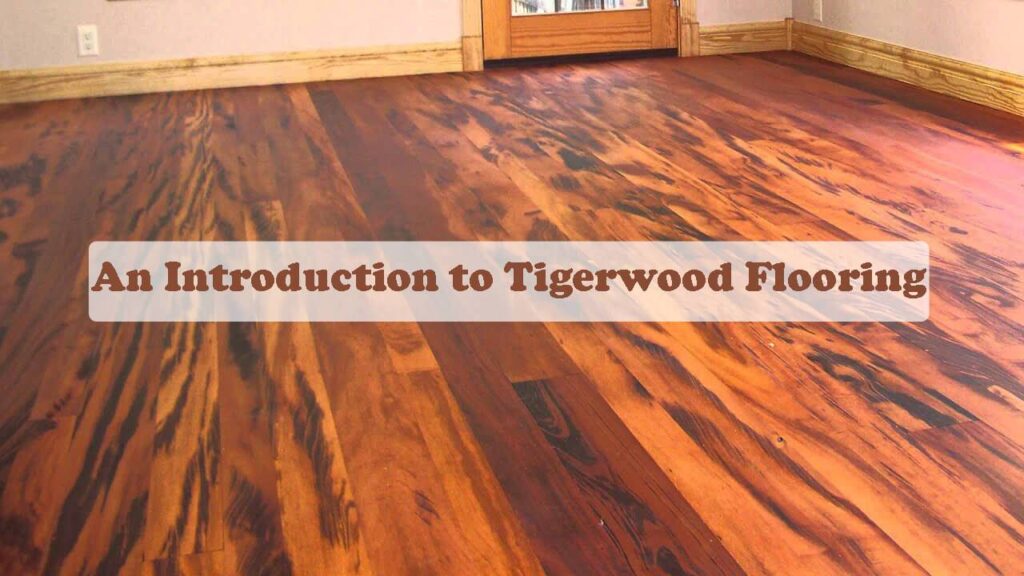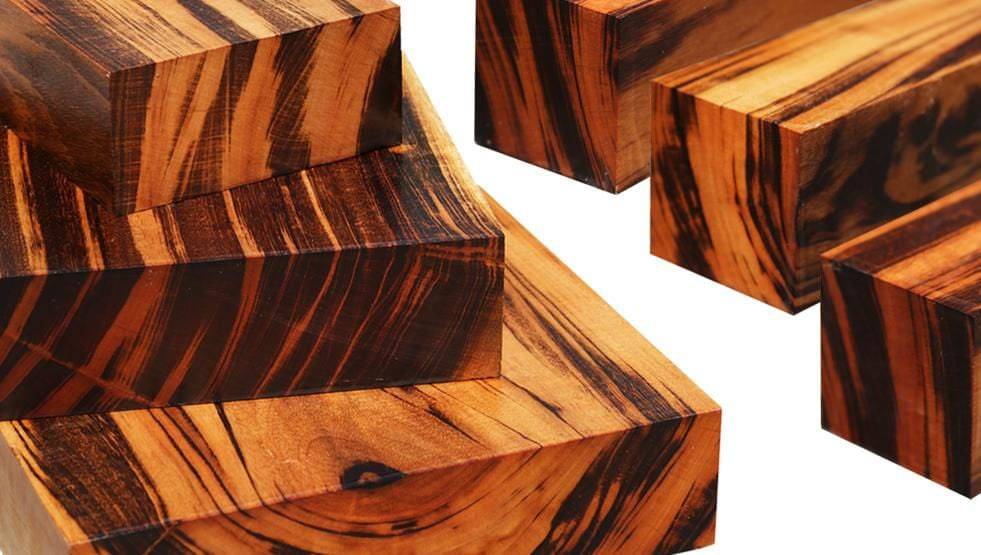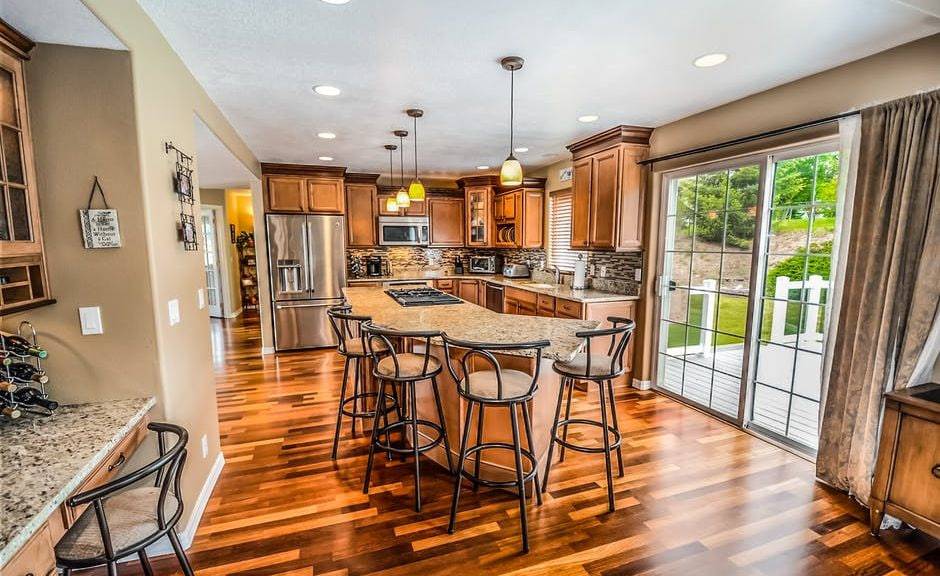Imagine a floor that stuns with exotic stripes of rich brown and golden hues, a floor that boasts unyielding strength underfoot, a floor that tells a story of natural elegance and resilience. This is the captivating world of tigerwood flooring.
More than just aesthetics, tigerwood offers a practical dream. Its Janka hardness rating rivals the toughest woods, making it impervious to dents, scratches, and the wear and tear of daily life. Perfect for busy families, active households, and even high-traffic commercial spaces, tigerwood stands the test of time.
But its allure goes beyond mere durability. Each plank is a unique artwork, showcasing a captivating interplay of colors and patterns. Whether you seek a warm and inviting touch for your living room or a sleek and sophisticated statement in your office, tigerwood adapts to your vision.
However, like any natural wonder, tigerwood demands respect. Its exotic origins come with specific needs, from proper maintenance to sustainable sourcing. But fear not, for with a little understanding and care, you can unlock the full potential of this remarkable flooring choice.
What Is Tigerwood?
Tigerwood is the common name for lumber produced from several species of tropical trees, mainly found in Africa, South America, and Central America. These species share similar characteristics, such as:
- Distinctive appearance: Rich reddish-brown to golden hues with contrasting dark stripes, resembling tiger fur.
- Exceptional hardness and durability: Resistant to dents, scratches, wear, rot, decay, and insect infestation.
- Versatility: Used for flooring, furniture, musical instruments, boat building, and decorative items.
Here are some of the most common tree species referred to as “tigerwood”:
- Lovoa trichilioides: Native to Africa, also known as African walnut or muiracatiara.
- Gonçalo alves: Found in Brazil, also known as Brazilian ironwood or courbaril.
- Astronium spp.: Grows in South America, also known as Astronium fraxinifolium, Astronium graveolens, or Astronium lecointei.
- Erythrina standleyana and Erythrina rubrinervia: From northwest South America and Central America, also known as coralbean or tigerwood.
- Microberlinia bisulcata: A tree native to Cameroon, also known as zebrano or zebrawood.
What is Tigerwood Used For?
Tigerwood, with its stunning visual appeal and impressive durability, finds application in a diverse range of areas. Here’s a breakdown of its common uses:
Interior Applications:
- Flooring: The most popular use of tigerwood is for flooring, thanks to its unique pattern, exceptional hardness, and natural resistance to rot and insects. However, its cost and potential color changes need consideration.
- Furniture: Its beauty and durability make it ideal for high-end furniture, including cabinets, tables, and chairs. It can add a touch of elegance and exoticness to any room.
- Veneer: Thin slices of tigerwood are used to create veneers that enhance the appearance of furniture and other objects, offering a cost-effective way to enjoy its distinctive look.
- Musical Instruments: Its tonal properties and strong structure make it suitable for various instruments, like drum shells, guitar necks, and bodies of high-end acoustic guitars.
- Decorative Items: Due to its striking beauty, tigerwood is utilized for decorative objects like sculptures, carvings, and inlay work, adding a unique touch to interior spaces.
Exterior Applications:
- Decking: Similar to flooring, tigerwood’s durability makes it a choice for outdoor decking, especially in high-traffic areas. However, its sensitivity to extreme weather conditions needs consideration.
- Exterior Cladding: Its resistance to rot and weather makes it suitable for cladding exterior walls, adding a distinctive aesthetic element to your home’s facade.
- Boat Building: Due to its strength and water resistance, some tigerwood species are used in boat building, particularly for decks and other exposed elements.
- Outdoor Furniture: Its durability makes it suitable for outdoor furniture like benches, tables, and chairs, although maintenance needs are crucial.
Maintaining the Beauty and Durability of Tigerwood Flooring and Decking:
Here are some key tips to ensure your tigerwood floor or deck retains its stunning looks and impressive durability for years to come:
Cleaning:
- Regular Sweeping/Vacuuming: Remove dirt and debris regularly to prevent scratching and buildup.
- Mild Soap and Water: For deeper cleaning, use a solution of mild soap and water (1/4 cup soap to 2 gallons water). Avoid harsh chemicals or cleaners specifically designed for softwoods.
- Prompt Spill Cleanup: Clean up spills immediately to prevent staining and water damage. Blot spills with a clean, absorbent cloth.
- Periodic Deep Cleaning: Depending on usage and climate, consider professional deep cleaning every 1-2 years to remove accumulated dirt and grime.
Moisture Control:
- Prevent Standing Water: Ensure proper drainage to prevent water pooling on the surface. Regularly clear leaves and debris from gutters and drain areas.
- Maintain Airflow: Under decks, allow for adequate air circulation to prevent moisture buildup and potential rot.
- Humidity Control: For indoor flooring, maintain moderate humidity levels (40-50%) to prevent warping and cupping.
Sun Protection:
- Limited Direct Sunlight: Tigerwood naturally darkens with sunlight exposure. Consider rugs or window treatments to reduce direct sunlight and maintain a consistent color.
- UV Protection: For decks, apply a UV-protective oil or stain according to manufacturer’s recommendations. This helps minimize color fading and protects the wood from sun damage.
Maintenance:
- Regular Inspections: Look for signs of wear, damage, or moisture issues. Address any concerns promptly to prevent further problems.
- Refinishing: Floors may require periodic refinishing (every 3-5 years) to maintain their luster and protect the wood. Follow the manufacturer’s recommendations for refinishing products and techniques.
- Professional Assistance: For complex maintenance tasks or concerns, consider consulting a professional flooring or decking specialist.
Tigerwood: Built to Last
Ever wonder why tigerwood floors gleam for decades? It’s all about hardness. Picture a steel ball pressing down on wood; the harder the wood, the more force it takes to leave a dent. That’s where the Janka hardness test comes in, ranking woods on a scale based on their dent resistance.
Tigerwood shines with a Janka rating of 2160, placing it among the toughest. Twice as hard as Peruvian Walnut (1080) and nearly as strong as Brazilian Cherry (2350), it shrugs off dents, scratches, and wear with ease.
Is this hardwood heaven for floors? Absolutely! Tigerwood’s exceptional durability makes it perfect for high-traffic areas, busy families, and pet lovers. Spills, dropped toys, and daily wear are no match for its resilience. So, rest assured, your tigerwood floor will remain beautiful and functional for years to come.
Remember: While its hardness is top-notch, tigerwood needs proper care. Regular cleaning, moisture control, and occasional refinishing ensure its lasting beauty. Invest in this durable wonder, and enjoy a floor that’s not just stunning, but built to last!
Tigerwood Flooring FAQs
What is Tigerwood Flooring?
Tigerwood flooring is crafted from several tropical hardwood species known for their distinctive striped patterns and exceptional durability. Its rich hues range from reddish-brown to golden, resembling tiger fur, adding a touch of exotic elegance to any space.
Is Tigerwood Durable?
Absolutely! With a Janka hardness rating of 2160, tigerwood ranks among the toughest woods, even exceeding popular choices like Peruvian Walnut (1080). This translates to remarkable resistance to dents, scratches, and everyday wear, making it ideal for high-traffic areas and active households.
Where Can I Use Tigerwood Flooring?
Its versatility allows for diverse applications. Inside, it shines as flooring, furniture, and decorative accents. Its natural resistance makes it suitable for exterior decking and cladding, though proper care is crucial in these environments.
Does Tigerwood Require Special Care?
While naturally resistant, tigerwood benefits from regular cleaning with mild soap and water, prompt spill attention, and periodic deep cleaning. Maintaining moderate humidity levels indoors and protecting it from excessive sunlight are also essential. Remember, proper care ensures its lasting beauty and performance.
Is Tigerwood Eco-Friendly?
Unfortunately, some tigerwood species face unsustainable harvesting practices. To contribute to responsible sourcing, opt for FSC-certified wood, ensuring its eco-friendly origin.
Is Tigerwood Flooring Expensive?
Due to its limited availability and desirable properties, tigerwood can be more expensive than other flooring options. However, its exceptional durability and timeless beauty make it a valuable investment for many homeowners.
What are the Pros and Cons of Tigerwood Flooring?
Pros:
- Stunning aesthetics with unique striped patterns
- Exceptional durability and scratch resistance
- Natural resistance to rot and insects
- Versatile for various applications
Cons:
- Higher cost compared to other wood options
- Can darken with prolonged sunlight exposure
- Requires proper care and maintenance
- Potential sustainability concerns if not sourced responsibly
Ready to Explore Tigerwood Flooring?
With its captivating beauty and unmatched strength, tigerwood flooring offers a unique and long-lasting solution for your home. By considering its characteristics, care requirements, and responsible sourcing, you can decide if this remarkable wood aligns with your needs and desires.



